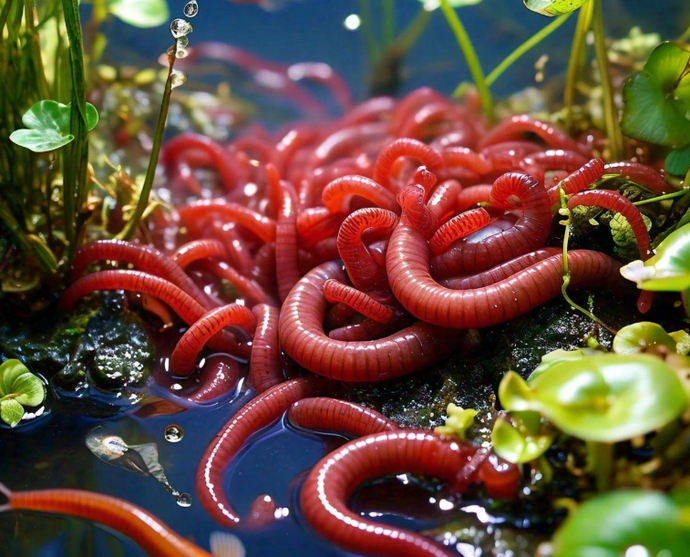Red wigglers: Their role in reducing waste
Red wigglers: Their role in reducing waste
Blog Article
Boost Soil Wellness Naturally With Red Wigglers
The assimilation of red wigglers into dirt monitoring practices provides a compelling technique for boosting soil health normally. These earthworms not only transform natural waste right into valuable vermicompost, however their all-natural behaviors likewise promote improved dirt structure, oygenation, and nutrient availability.
Advantages of Red Wigglers

In addition, red wigglers improve soil structure by producing channels as they tunnel through the earth. This task enhances aeration and drainage, facilitating root growth and guaranteeing that plants receive ample oxygen and wetness. Additionally, the spreadings produced by red wigglers are high in nutrients such as nitrogen, phosphorus, and potassium, which are important for plant growth.
Red wigglers likewise help in the decrease of damaging virus and insects by outcompeting them for sources, even more adding to a much healthier dirt setting. Their presence can bring about a decline in the requirement for synthetic plant foods and pesticides, promoting sustainable farming methods. Overall, incorporating red wigglers into soil monitoring methods gives a natural and effective ways of enhancing soil vigor, thereby supporting robust plant growth and agricultural productivity.
Establishing Vermicomposting
Establishing a vermicomposting system is a sensible way to harness the exceptional advantages of red wigglers in enhancing soil health. red wigglers. To begin, pick an ideal container-- preferably, a plastic or wooden container with a lid to preserve dampness and temperature. The container ought to have drain holes to stop excess water buildup
Next, prepare bed linens material, which acts as a habitat for the worms. Appropriate products include shredded paper, cardboard, or coconut coir. Go for a deepness of 4-6 inches to provide adequate room for the worms.
Once the bed linens remains in location, introduce the red wigglers, usually at a ratio of one extra pound of worms for every single square foot of surface in the bin. Following this, include kitchen area scraps such as vegetables and fruit peels, coffee premises, and smashed eggshells. Avoid meat, dairy products, and oily foods, as these can bring in parasites.
(red wiggler compost bin)
Caring for Your Worms
Keeping the wellness of your red wigglers is vital for a thriving vermicomposting system. Correct treatment makes certain that these helpful microorganisms can properly damage down natural issue and enhance your soil.
Feeding your worms is an additional vital facet of their treatment. Red wigglers flourish on cooking area scraps such as vegetables and fruit peels, coffee grounds, and smashed eggshells. Stay clear of feeding them citrus fruits, onions, and dairy items, as these can create an inhospitable atmosphere. Screen the amount of food you give to stop overfeeding, which can cause smell issues and attract pests.
Temperature level administration is important; worms prefer a variety of 55 to 77 degrees Fahrenheit. By adhering to these guidelines, you will certainly promote a healthy ecosystem for your red wigglers.
Making Use Of Worm Castings in Soil
Worm spreadings, typically referred to as "black look at this web-site gold," are a powerful modification that can significantly enhance dirt wellness and fertility. red wigglers. These nutrient-rich, natural plant foods are generated by red wigglers throughout their food digestion procedure, causing a finely textured material that is advantageous for plants and dirt alike
Incorporating worm spreadings right into your dirt improves its structure, improving aeration and water retention. This is specifically advantageous for sandy soils that drain as well rapidly, as well as hefty clay dirts that can come to be compressed. Worm spreadings are replete with necessary nutrients, including nitrogen, phosphorus, and potassium, which are important for plant development.

Inevitably, the usage of worm castings promotes a growing community within the soil, bring about healthier plants and even more lasting horticulture techniques.
Tips for Effective Composting
Effective composting needs cautious interest to a couple of essential principles that can significantly boost the high quality of the final item. Equilibrium is important; keep a correct ratio of eco-friendly materials (nitrogen-rich) to brown products (carbon-rich), preferably around 1:3. This balance assists in effective decay and lessens smells.
2nd, oygenation plays an essential function. Regularly transforming the compost heap boosts oxygen circulation, which increases microbial task and rates up the composting procedure. Objective for a heap size of at the very least three feet by 3 feet to maintain warmth, which better advertises disintegration.
(Lenoir Worm Farms)
Moisture web content is another vital factor; the compost ought to be wet but not soggy. A good guideline is to accomplish a moisture level comparable to that of a wrung-out sponge. Too much water can result in anaerobic conditions, while inadequate can decrease decay.
Last but not least, keep an eye on the temperature of the compost. A temperature array of 130 ° F to 160 ° F suggests active composting and helps kill virus and weed seeds. By sticking to these concepts, you will develop a nutrient-rich garden compost that supports soil health and boosts plant development.
Conclusion
Integrating red wigglers into horticulture methods improves soil health via all-natural procedures. These worms add to the break down of organic products, resulting in nutrient-rich vermicompost that enhances dirt framework and fertility.
Report this page